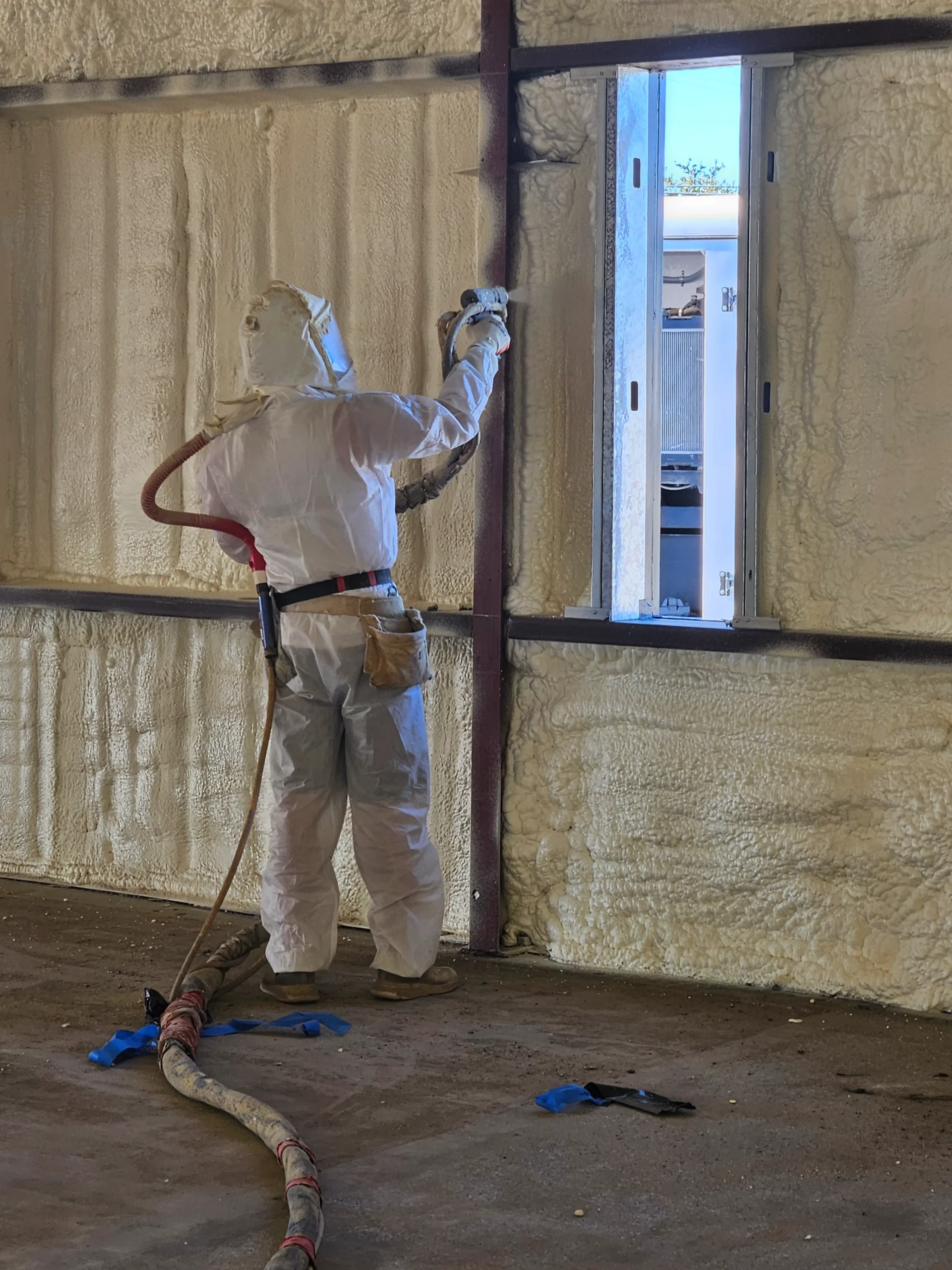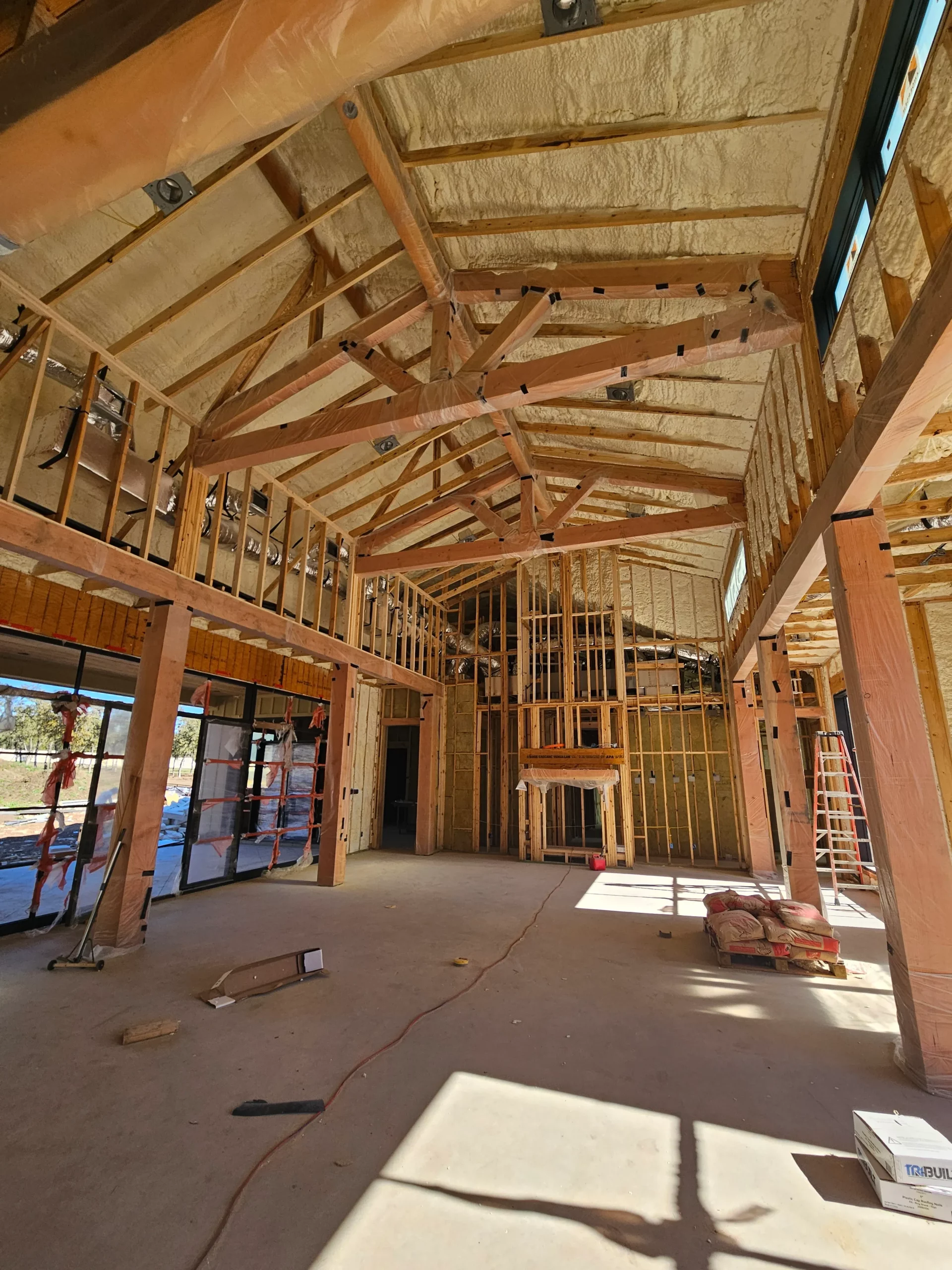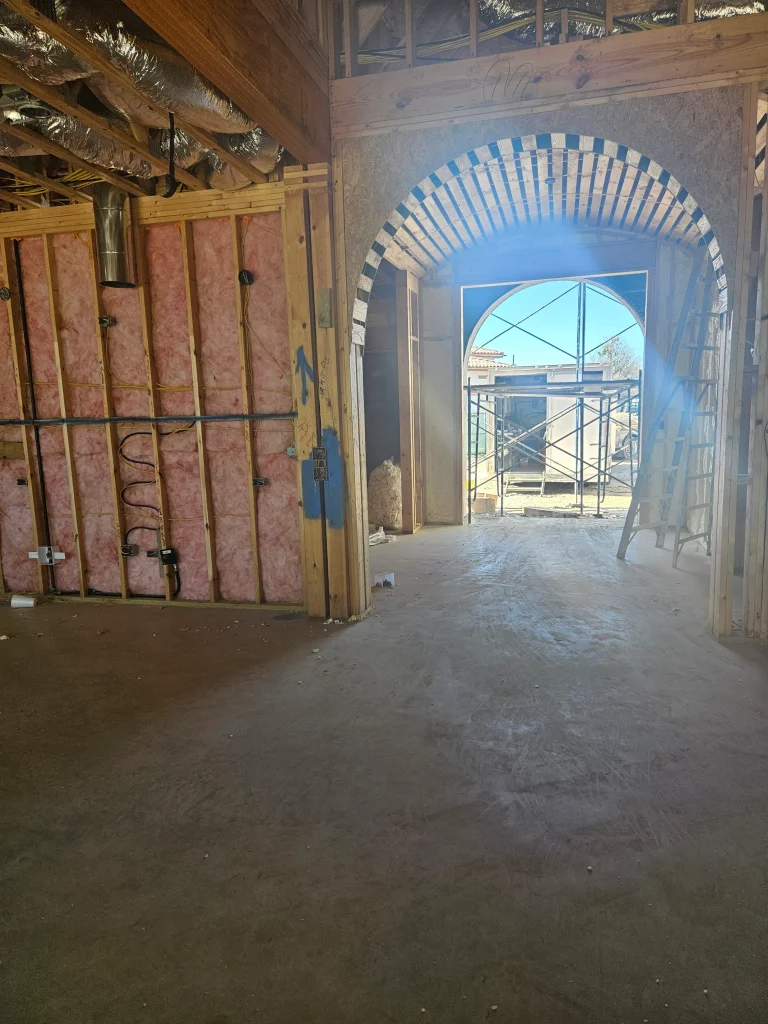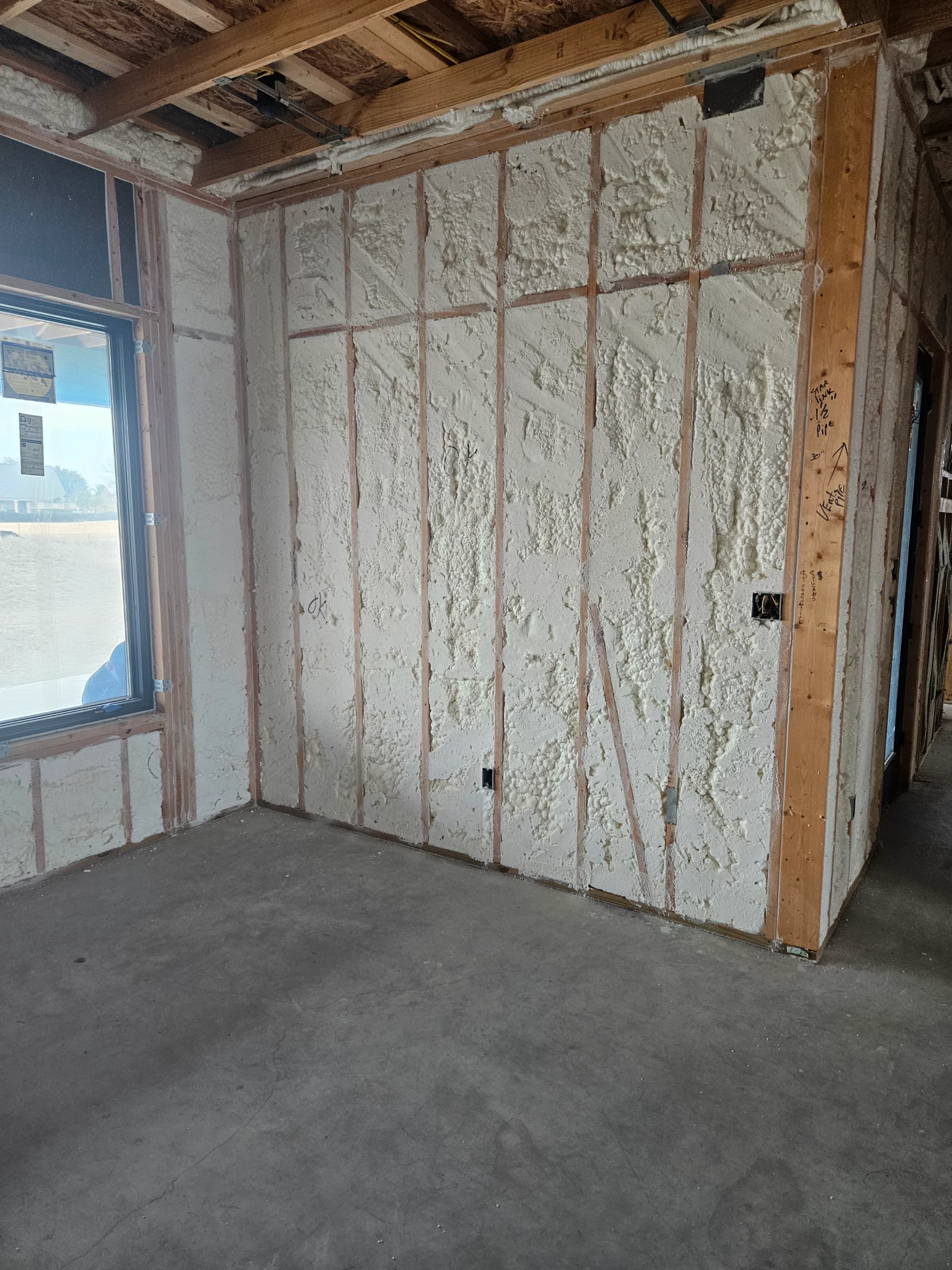

Temple residents face unique insulation challenges due to Central Texas’s extreme temperature swings, high humidity levels, and intense summer heat that can reach 100°F for extended periods. Proper insulation becomes critical for maintaining comfortable indoor temperatures while managing energy costs that can spike dramatically during peak summer months. The most effective approach combines understanding your home’s thermal envelope, selecting insulation materials suited for hot, humid climates, and ensuring proper installation techniques that prevent moisture infiltration and thermal bridging.
The key considerations for Temple,TX homeowners include choosing insulation with appropriate R-values for Zone 2A climate requirements, addressing air sealing to combat humidity issues, and selecting materials that perform consistently in temperatures ranging from winter lows in the 30s to summer highs exceeding 100°F. Based on extensive field experience in Central Texas installations, homes with inadequate or improperly installed insulation can experience energy bills 40-60% higher than properly insulated structures, making informed insulation decisions essential for long-term comfort and cost management.
Temple’s location in USDA Hardiness Zone 8a creates specific demands for insulation systems. The region experiences approximately 2,700 cooling degree days annually, significantly higher than heating degree days at around 1,400, according to the National Weather Service climate data. This cooling-dominated climate requires insulation strategies that prioritize keeping cool air inside while blocking radiant heat from penetrating the building envelope.
High humidity levels averaging 65-75% throughout the year create additional challenges for insulation performance. Moisture infiltration can reduce insulation effectiveness by up to 50% and lead to mold growth, structural damage, and indoor air quality issues. The combination of heat and humidity makes air sealing equally important as insulation R-value selection.
Summer temperatures consistently above 90°F for 4-5 months annually place continuous stress on insulation systems. Materials must maintain their thermal resistance properties under sustained heat exposure while preventing thermal bridging that allows unwanted heat transfer. Winter conditions, though milder, still require sufficient insulation to maintain comfort during occasional freezes and ice storms.
Bonus Tip: Install insulation with vapor barriers facing the conditioned space in Temple’s climate zone. This prevents warm, humid outdoor air from condensing inside wall cavities during cooling season, which represents the primary moisture drive direction in hot, humid climates.
| Insulation Type | R-Value per Inch | Moisture Resistance | Temperature Stability | Best Application in Temple Climate |
|---|---|---|---|---|
| Open-Cell Spray Foam | 3.6-3.8 | Moderate | Excellent | Interior walls, sound dampening |
| Closed-Cell Spray Foam | 6.0-6.5 | Excellent | Superior | Exterior walls, roofing, basements |
| Mineral Wool | 3.0-3.3 | Good | Excellent | Fire-prone areas, soundproofing |
| Fiberglass Batts | 2.2-2.7 | Poor | Good | Budget applications, existing walls |
| Blown-In Cellulose | 3.2-3.8 | Fair | Good | Attic spaces, retrofit applications |
| Specification | Requirement | Recommended Value | Critical Factor |
|---|---|---|---|
| Wall R-Value | R-13 minimum | R-15 to R-20 | Continuous insulation preferred |
| Attic R-Value | R-30 minimum | R-38 to R-49 | Air sealing essential |
| Crawl Space R-Value | R-19 minimum | R-25 to R-30 | Moisture control critical |
| Air Changes per Hour | 7 ACH maximum | 3-5 ACH target | Blower door testing required |
| Vapor Permeance | <1 perm | 0.1-0.5 perm | Cooling season focus |
According to Energy Star data, properly installed insulation can reduce cooling costs by 15-30% in Central Texas homes. The Electric Reliability Council of Texas (ERCOT) reports that residential cooling accounts for approximately 60% of summer electricity usage in the region, making insulation improvements one of the most cost-effective energy efficiency measures available.
Investment payback periods typically range from 2-7 years depending on insulation type and installation scope. Closed-cell spray foam installations often achieve faster payback due to superior air sealing properties, while traditional materials may require longer payback periods but involve lower upfront costs.
The average Temple household spends $1,800-2,400 annually on electricity, with cooling representing the largest component during May through September. Inadequately insulated homes can experience peak summer bills exceeding $400 monthly, while properly insulated structures typically maintain bills under $250 during the same periods.

Evaluate your home’s current thermal performance through professional energy auditing before selecting insulation upgrades. Blower door testing reveals air leakage rates, while thermal imaging identifies heat transfer patterns that indicate insulation deficiencies or thermal bridging issues.
Consider moisture management requirements specific to your home’s construction style and age. Older homes may lack proper vapor barriers or have settling issues that create gaps in existing insulation. Newer construction might benefit from continuous insulation approaches that eliminate thermal bridging at framing members.
Budget planning should account for both material costs and installation complexity. Spray foam applications require professional installation and specialized equipment, while some batt or blown-in options allow for DIY installation in accessible areas. However, professional installation typically ensures better performance and warranty coverage.
Bonus Tip: Schedule insulation upgrades during spring or fall months when temperatures are moderate. This allows contractors to work more efficiently and reduces disruption to your home’s climate control during extreme weather periods.
Complete thermal envelope sealing using open-cell or closed-cell spray foam systems designed for Central Texas climate conditions. Professional application ensures proper thickness, coverage, and curing for optimal performance.
Safe removal of deteriorated, contaminated, or ineffective existing insulation materials followed by installation of climate-appropriate replacement systems. Includes air sealing and vapor barrier installation.
Comprehensive insulation improvements targeting specific thermal weak points identified through professional assessment. Combines multiple insulation types for optimal cost-effectiveness and performance.
Large-scale insulation projects for commercial and industrial facilities requiring specialized materials and installation techniques to meet energy codes and operational requirements.
Selecting appropriate insulation for Central Texas conditions requires balancing upfront costs, long-term performance, and climate-specific requirements. The region’s hot, humid summers and mild winters favor materials that excel at blocking radiant heat while managing moisture infiltration effectively.
Professional assessment provides the foundation for informed decision-making by identifying specific thermal weak points and moisture management needs. This targeted approach ensures insulation investments deliver maximum comfort improvements and energy savings for decades.
Proper installation techniques prove equally important as material selection in achieving optimal performance. Air sealing, vapor barrier placement, and continuous coverage prevent thermal bridging and moisture issues that can compromise even premium insulation materials.
Choosing the right insulation solution for your Temple home requires understanding local climate challenges and building science principles. Professional consultation helps identify the most cost-effective approaches for your specific situation and ensures installations meet both code requirements and performance expectations.
Spray Foam Tech provides comprehensive insulation assessment and installation services designed specifically for Central Texas conditions. Our team understands the unique demands of Temple’s climate and delivers solutions that maximize energy efficiency while preventing moisture-related issues.
Contact Spray Foam Tech today for expert evaluation of your insulation needs and customized recommendations that deliver lasting comfort and energy savings.
Phone: (737) 777-9590
Email: oldworldtx@hotmail.com
Building codes require minimum R-13 for walls and R-30 for attics, but optimal performance typically requires R-15-20 for walls and R-38-49 for attics given the region’s cooling load demands.
High humidity requires insulation materials with good moisture resistance and proper vapor barrier installation. Closed-cell spray foam excels in humid conditions, while fiberglass batts can lose effectiveness if moisture infiltrates the wall cavity.
Properly installed insulation often allows for smaller, more efficient HVAC systems during replacement. This creates additional cost savings beyond reduced energy bills through lower equipment costs and installation expenses.
Uneven temperatures between rooms, ice dams during rare freezing events, excessive dust accumulation, and cooling bills significantly above regional averages all indicate potential insulation deficiencies.
Quality closed-cell spray foam maintains its R-value and structural integrity for 20-30 years under normal conditions. Open-cell foam typically lasts 15-25 years before showing performance degradation. Regular inspections every 5-7 years help identify any issues early.
Older homes often show the most dramatic improvement from insulation upgrades due to minimal existing thermal protection. Return on investment frequently occurs within 3-5 years through reduced energy costs, improved comfort, and increased property value.
Spray foam insulation requires minimal maintenance once properly installed. Annual visual inspections for settling, damage, or pest intrusion help maintain performance. Traditional insulation materials may need periodic fluffing or replacement in high-traffic areas.
While some insulation types allow DIY installation, professional installation typically achieves better air sealing, proper vapor barrier placement, and uniform coverage. This becomes especially important in Temple’s humid climate where installation mistakes can lead to moisture problems.
Many local utilities and energy providers offer rebates for qualifying insulation upgrades. These incentives can reduce project costs by 10-30% and often require professional installation and energy efficiency verification to qualify for full rebate amounts.


